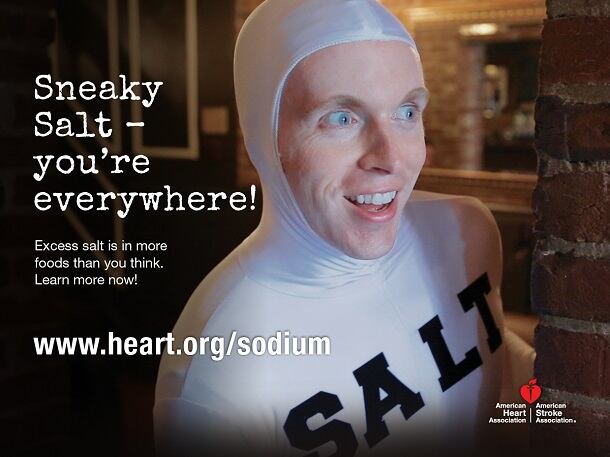If successful, the campaign, which launched in July, could help food manufacturers overcome several hurdles that they say have stymied their efforts to further reduce sodium in packaged foods, said Emily Anne Miller, the national program lead for AHA’s Sodium Reduction Initiative.
For example, she explained, many manufacturers have successfully reduced sodium in foods upwards of 40% to 50% but have not gone farther because they say consumers refuse to buy products claiming reduced sodium on the assumption that less salt equals less flavor. However, by repositioning consumers’ view of sodium from “more is better” to excessive sodium is a health threat, the campaign could help consumers see reformulated products with less sodium as a positive rather than a negative.
This in turn could help level the playing field by minimizing the threat that consumers will abandon a reformulated product for a competing version that did not reformulate and therefore has a more familiar taste, said Miller.
Step one: consumer education
The campaign aims to change consumers’ perception of sodium and its health impact with the light-hearted but also serious tagline: “I love you salt, but you are breaking my heart,” which “conveys the concept that we all have a relationship with salt, but it’s not a healthy one – and we need to break up with excessive salt so we can live healthier lives,” according to AHA.
A main component of the campaign is educating consumers about how much salt they eat, where it comes from and how to reduce it, Miller said.
She explained on average Americans eat more than 3,400 mg of salt daily – which is twice AHA’s recommended amount for ideal heart health – but that most people are unaware they need to reduce their intake.
A survey by AHA found 97% of consumers either underestimated or were not able to estimate how much sodium they consume on average each day. In addition, most people did not know that more than 80% of sodium comes from “outside the salt shaker,” with 77% coming from processed or restaurant foods.
The survey also found 75% of participants said they would prefer less sodium in processed and restaurant food with the understanding that they “can always add a little salt back at the table,” Miller said. She added that when people use salt at the table, they typically add no more than 20% of the reduced amount back.

The campaign also uses a “salt man” anti-hero in videos and at events to educate consumers about how salt is hidden in many prepared foods. In one video, the character dramatizes the impact of hidden salt by jumping out of a refrigerator and from behind a restaurant wall to scare people eating.
As of mid-November, the video received more than 13,000 views on YouTube without any paid support, Miller said.
After educating consumers, the campaign asks them to pledge to break up with excess sodium, which more than 9,000 people have done since July. The pledge not only involves consumers, but it helps AHA gather contact information of people who may be interested in future actions to pressure the food industry to reduce sodium, Miller said.
In the meantime, AHA encourages consumers to look at the Nutrition Facts panels on foods and buy products with the lowest sodium amount in the food category, Miller said. She anticipates this will demonstrate consumer demand for more reduced sodium products and also will be an incentive for manufacturers with high-sodium products to reduce the salt levels to be more in line with competitors.
What manufacturers can do
Food manufacturers can simultaneously build on AHA’s efforts to reposition reduced-sodium as a positive in consumers’ minds by tying sodium reduction efforts into the overall health and wellness trend, which is influencing many shoppers’ purchases, Miller said.
She recognized that most efforts to reduce sodium are “stealth health” initiatives that do not call out lower sodium. She also noted that to qualify for reduced-sodium claims firms must drastically cut sodium levels, which may not be necessary to effect change. But, she emphasized any reduction helps and that people’s taste will change over time so that the prior levels of sodium will taste too salty.
In addition, she says sodium reduction efforts “dovetail” with other health and wellness efforts, such as portion-control. She explained sodium intake is directly tied to calorie intake and that the fewer calories people consume, the less sodium they will consume, too.
